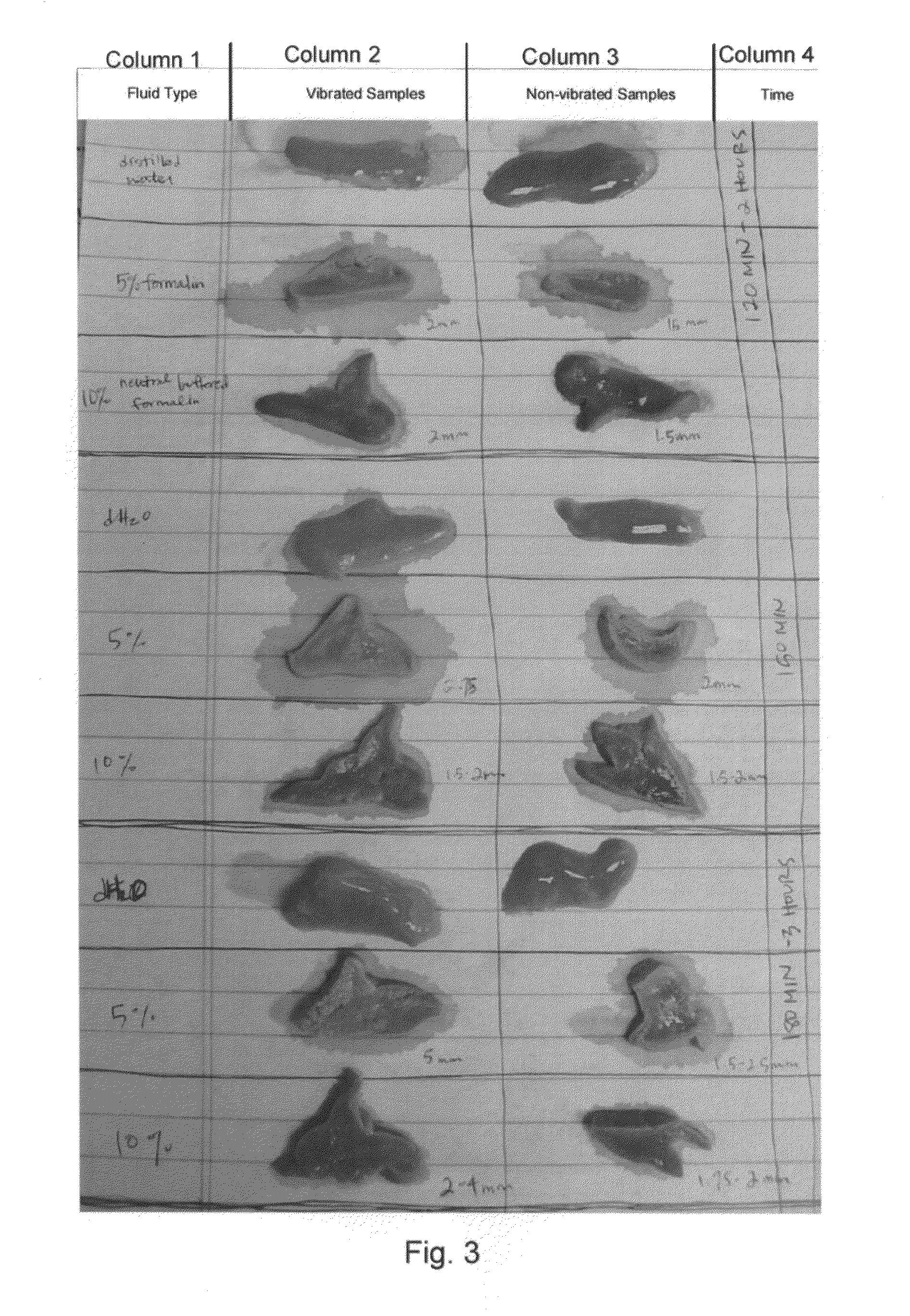Methods for accelerating tissue processing
a tissue and processing technology, applied in the field of systems and methods for accelerating tissue processing, can solve the problem of requiring a longer amount of time for diffusion leading to fixation, and achieve the effect of efficient diffusion
- Summary
- Abstract
- Description
- Claims
- Application Information
AI Technical Summary
Benefits of technology
Problems solved by technology
Method used
Image
Examples
examples
[0052]FIGS. 2 through 3 contain comparative photographs depicting experimental results from a representative method for accelerating tissue processing with infrasonic vibrations. To achieve the experimental results depicted in FIGS. 2 and 3, chicken livers were placed in distilled water, 5% formalin, and 10% neutral buffered formalin. Specifically, the experimental set up depicted in FIGS. 4A and 4B show that all of the liver samples 10a and 10b were placed in containers 60 containing fluid (e.g., distilled water 65, 5% formalin 70, or 10% neutral buffered formalin 75). Further, FIG. 4A shows that a first half of the samples 10a were placed in a box 80 on the vibrating surface 25 of the infrasonic vibrating table 30. FIG. 4A also shows that a sponge 85 was placed on top of the box 80 to dampen any sound vibrations. In contrast, FIG. 4B shows the second half of the samples 10b were placed on a non-vibrating surface (e.g., a countertop 90).
[0053]While the liver samples on the non-vibr...
PUM
| Property | Measurement | Unit |
|---|---|---|
| frequency | aaaaa | aaaaa |
| frequency | aaaaa | aaaaa |
| frequency | aaaaa | aaaaa |
Abstract
Description
Claims
Application Information
 Login to View More
Login to View More - R&D
- Intellectual Property
- Life Sciences
- Materials
- Tech Scout
- Unparalleled Data Quality
- Higher Quality Content
- 60% Fewer Hallucinations
Browse by: Latest US Patents, China's latest patents, Technical Efficacy Thesaurus, Application Domain, Technology Topic, Popular Technical Reports.
© 2025 PatSnap. All rights reserved.Legal|Privacy policy|Modern Slavery Act Transparency Statement|Sitemap|About US| Contact US: help@patsnap.com



